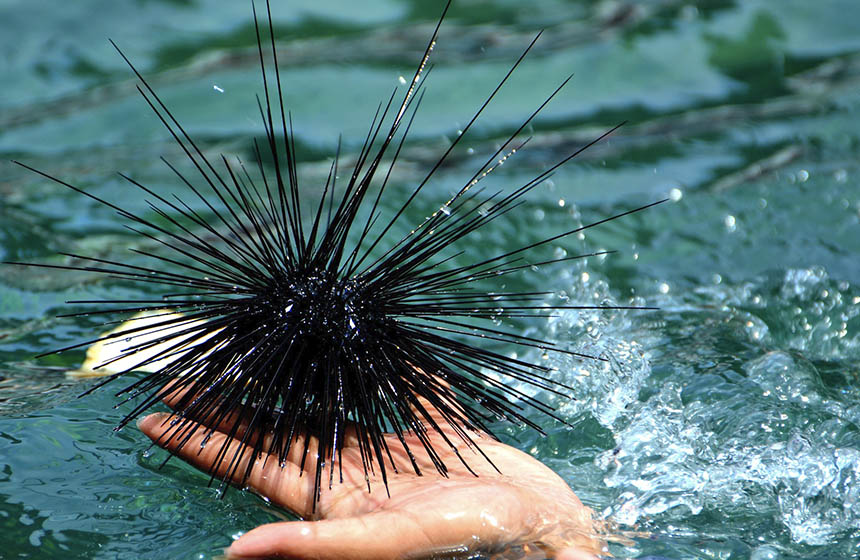Marine protected areas help maintain predators of invasive sea urchin pests
Two ‘no-take’ Marine Protected Areas (MPAs) off the coast of eastern Tasmania have been shown to conserve large-sized spiny lobsters (Jasus edwardsii) which are the most important predator of the long-spined sea urchin (Centrostephanus rodgersii) that is responsible for degrading kelp beds.
Nature-based Intervention:
Two ‘no-take’ Marine Protected Areas (MPAs), the Maria Island Marine Reserve and the Crayfish Point Research Reserve, were established and assessed by academic researchers 12 and 31 years, respectively, after their creation for their influence on urchin populations. The academic study found that the MPAs had prevented fishing of lobsters, effectively keeping the sea urchin population under control and preventing sea kelp bed degradation to barren states.
Overview of context and outcomes:
Warmer waters caused by climate change have increased the range of the long-spined sea urchin, driving it into new areas with less predators, while the higher temperatures have also increased their reproductive potential, resulting in larger urchin populations. The high populations of urchins have begun to overgraze sea kelp beds in various locations along the coast of Tasmania, and some sites have experienced a dramatic phase-shift, whereby the ecosystems shift into an impoverished, barren and undesirable state that is difficult to reverse. These findings are an example of how multiple interacting factors of human influence – in this case climate change and lobster fishing – can have non-linear consequences for ecosystem resilience.
Case effectiveness on
Climate change
While climate change has led to increased sea urchin populations and ranges along the coast of Tasmania, the conservation of predator lobster populations in ‘no-take’ MPAs has reportedly mitigated these effects.
Ecosystem health
Ecological effect: PositiveThe MPAs have reportedly supported ecosystem health through maintaining the resilience of the system by conserving sufficiently high populations of lobster predators which keep the potentially-invasive sea urchin populations under control, preventing them from degrading the sea kelp beds.
Socioeconomic outcomes
While not reported, MPAs can help support increased local marine species populations which can then be used for income generation by local communities.
Governance
The MPAs are administered and managed by the Australian Government.
Finance
The MPAs were funded by the Australian government and the urchin suppression research was funded by the University of Tasmania, Tasmanian Aquaculture and Fisheries Institute (TAFI), Tasmanian Abalone Council, and Fisheries Research and Development Corporation.
Monitoring and evaluation
Research teams conducted detailed monitoring within the two MPAs to see the influences of their no-fishing zones.
Trade-offs and limitations
No information yet available on tradeoffs.

Intervention type
- Protection
Ecosystem type
- Temperate oceans
Climate change impacts addressed
- Increased pests
Societal challenges
- Biodiversity conservation
- Climate change adaptation
Outcomes
- Food security: Not reported
- Water security: Not reported
- Health: Not reported
- Local economics: Not reported
- Livelihoods/goods/basic needs: Not reported
- Energy security: Not reported
- Disaster risk reduction: Not reported
- Rights/empowerment/equality: Not reported
- Conflict and security: Not reported
- No. developmental outcomes reported: 1
Resources
Read resource 1Literature info
- Peer reviewed

